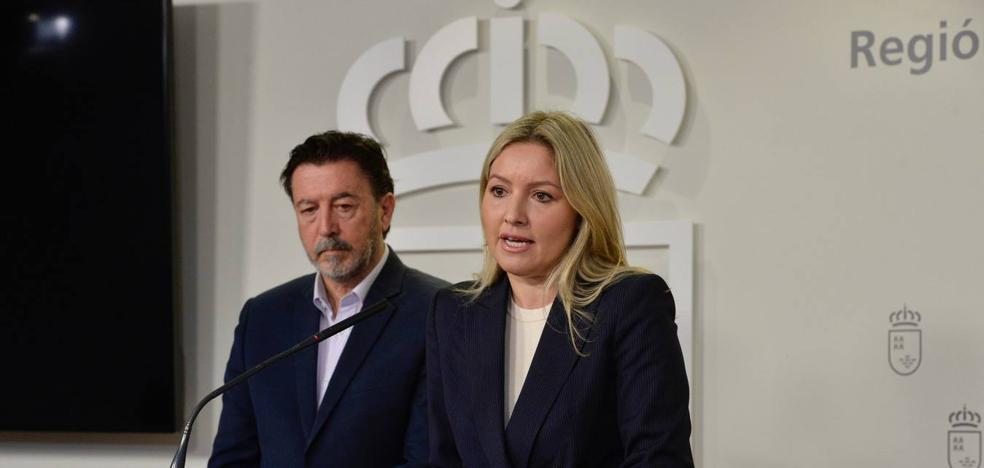Of the two concert records, one inspires, the other frustrates.
| Updated
Contemporary music / Album
Exquisitely Absurd. Petri Kumela, Tapiola Sinfonietta, Dima Slobodeniouk. Alb.
★★★
Finnish Accordion Concertos. Central Ostrobothnia Chamber Orchestra, Tomas Djupsjöbacka. Alb.
★★★★
Two concert disc and two final results, frustrating and exhilarating.
They are on the guitar concerto disc Antti Auvinen Andalusian Panzerwagen Jazz, Lotta Wennäkosken A whisper and Riikka Talvitien Without Irony. All great compositions, where the imagination is thrown into overdrive.
Auvinen's “let's meet at the market” aesthetic is always fun, it also conveniently turns from fun to hate. Wennäkoski's splashing and abrasive sound world is very tense, if you can hear anything about its immateriality. Talvitie's work is more lingering. It also uses the e-bow device, which makes the guitar strings vibrate without contact using an electromagnetic field.
The guitarist who influenced the creation of three concerts Petri Kumelan virtuosity can only be admired and admired. Dima Slobodeniouk led by Tapiola Sinfonietta sovereignly controls the most unusual playing styles and the objects of the pallet, from which some kind of noise effect is extracted.
But from what frustration? It could be dismantled by looking at the built-in conflict between an acoustic guitar and an orchestra, even a small one, on a general level. On the record, it's easy to bring the guitar to the fore. In a concert, electronic amplification easily distorts the sound, although it is often claimed otherwise.
The tonal dissonance has a limiting effect on the solo part, which has to live on the terms of the orchestra. The seductive tonal characteristics of the guitar threaten to be lost. Instead of soft tones, you have to come up with hard-toned effects or repetitive, orchestral licks. The guitar sounds malnourished if it doesn't convulsively push itself into the audience.
The most interesting things happen in the orchestra, as well as on this record, where the orchestra is recorded far away and as narrow as a swamp. Therein lies another source of frustration. The album's potential remains in the barrel.
More exciting the accordion concerto disc follows the golden middle path of sonorous abundance. Aulis Sallinen Duo concertanteas soloists Sonja Vertainen and Janne Valkeajokihighlights fast beats, lyrical pauses and a gambling attitude. Minna Leinonen Avalancheas a soloist Antti Leinonenis the most dramatic work on the album, whose ferocity is emphasized by the growlingly plush recording.
Known as a dizzying improviser Brother Kujala plays his own instrument versatilely as a composer In Shape-Shifteras a soloist Petteri Warisand reserve many raw moments for the orchestra as well.
Tomas Djupsjöbacka The Central Ostrobothnia Chamber Orchestra, led by
Contemporary music / Album
Mustonen: Symphonies No. 2 & 3. Ian Bostridge, Turku Philharmonic Orchestra, Mustonen. Ondine.
★★★★
As a symphony composer Olli Mustonen represents a remote Kalevala-eastern branch in the family tree of Finnish music. Although names come to mind, for example Shostakovich, Prokofiev and Mussorgsky, Mika Waltarin the novel John Angelos the second symphony named after him is a completely idiosyncratic, ritualistically repetitive, hymn-like and darkly clattering work.
The third symphony about the Päivänpässä legend, Sky lights, is a rare vocal symphony. Tenor soloist – excellent Ian Bostridge – the text is in English From the Kalevala. The mythical, alternately fast-paced and fatally dramatic work progresses like a spell, reminiscent of a poetic song. The immersive harmonies and archaic mythicity, fertilized by the triads of the black tonal language, take you to an island where contemporary Finnish music rarely gets lost or dares.
The performances captivate, although the performance of the Turku Philharmonic Orchestra led by the composer has its groovy moments, which are emphasized by the direct acoustics of the Turku Concert Hall.
Classic / Album
Sibelius: Lemminkäinen, Karelia series, Rakastava. HKO, Mälkki. BIS.
★★★★
Susanna Mälkin interpretations by Jean Sibelius from early favorite works sound plush and the rhythms are snappy, but elsewhere the restraint and cool translucence lower the temperature. Pet series in the opening section, Lemminkäinen and the island maidensthe demanding balancing act is exemplary, but the erotic fever remains faint. Paula Malmivaaran English horn In the swan of Tuonela hypnotize.
In the past, it was perceived as problematic Lemminkäinen in Tuonela with its terrifying ascents and plunges into darkness becomes the highlight of the album. Karelia series jiggles leisurely, the interlude sounds almost like sad music. Loving sounds more juicy than usual. Loved-part's tremolos Mälkki twists iron wire. The final part Good evening – Good night! the sudden turn from the caressing violin solo to the parting mood is powerful. Sibelius knew the art of condensing, and so does HKO.
Contemporary music / Album
Wennäkoski: Zeng. Virpi Räisänen, Avanti, József Hárs. Alb.
★★★★★
Lotta Wennäkoski has created a personal musical language of hustling, chirping, clicking, strumming and jingling, which has been successfully renewed over the years. Although there is a lot of air in the music, sounds that fall to the threshold of hearing and broken tones, the inner stringiness and accurate sense of tone keep it lively and resonant. And it's fun when In the hem piano trio runs properly or In Helle József Hársin led by Avanti, with his bird whistles, goes wild.
In Zeng the supreme one performs virtuosoly By Lucie Horsch recorder. Instead of vingar based on Eva-Stina Bryggmästarin to poems that “leave bite marks on the landscape”. They are interpreted by a mezzo-soprano Virpi Räisänen, which tackles big pitch jumps with ease. Wennäkoski has the unmistakable skill of combining noise with harmony and silence with energy.
Classic / Album
Oskar Merikanto: Songs. Waltteri Torikka, Marko Hilpo. Ondine.
★★★★
Unbeatable a melodist Oskar Merikanto is Waltteri Torika and Marko in Hilpo got a pair of interpreters that reminds me of the 1980s Jorma Hynninen and by Ralf Gothón. Hilpo's wide-ranging, tonal and stormy pianism makes no apologies, while it fits Torika's baritone like a silk glove.
Torika's beautifully echoing interpretations have both the detailed nuances of an art song and the openness of a folk song. Disc opener Bye, bye, shirt pants tunes the atmosphere to a bit of refinement with his delay, but don't worry, in the future there will be something for everyone and everything for everyone. Merikanton's lovely melodies bubble up in grand songs At sea, For life! and Slab.
Whether it's about religious devotion, sorrow, caressing, the cheerfulness of a traveler or the beauty of summer nature, Merikanton's melodic juice flows straight into the veins. One of the 29 songs on the album is previously unrecorded Night (op. 110/1).
Correction 28.3. 19:20: Minna Leinonen's accordion concerto is played by Antti Leinonen, not Janne Leinonen.
#Disc #Reviews #acoustic #guitar #lives #terms #orchestra #accordion #speaks #bars #concert #records #show









